A&P unit 3 - membrane potential
1/52
Earn XP
Description and Tags
Name | Mastery | Learn | Test | Matching | Spaced |
|---|
No study sessions yet.
53 Terms
chemical synapse
-release neurotransmitter btwn cells
-synaptic delay = delay of .3-5ms
-unidirectional flow
-very common in humans
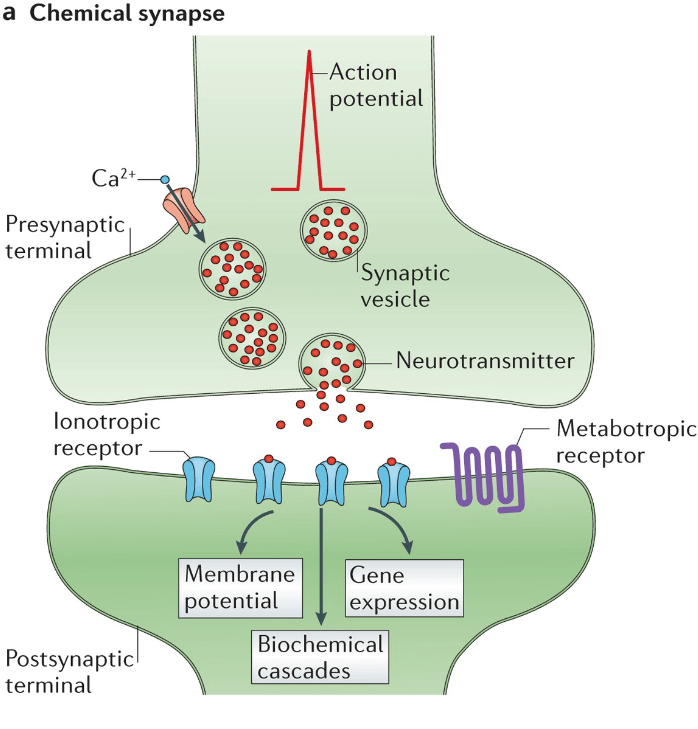
electrical synapse
-uses gap junction, ions flow directly thru connexons
-no synaptic delay
-bidirectional flow
-rare in humans
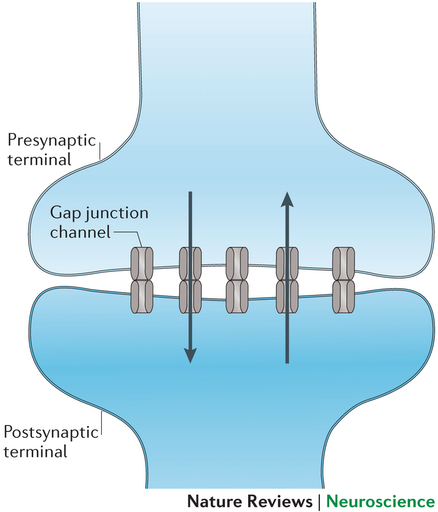
How can you make an electric synapse response faster?
-increase the amount of gap junctions for ion flow
-increase time that gap channels are “open” instead of closed
RMP
resting membrane potential
→ maintain electrochemical gradient
→ measured in V or mV
→ needed for nerve and muscle function
2 conditions of RMP
1) unequal distribution of ions
→ more K in cell, more Na out of cell → Na/K pumps
2) unequal amount of charge
→ outside of cell is more pos than neg
How is the RMP maintained via K and Na? (diagram)
-more K+ leak channels than Na+ leak channels
-when K+ leaves cell, it makes the inside of the cell more negative
-negatively charged anions also make inside of cell negative
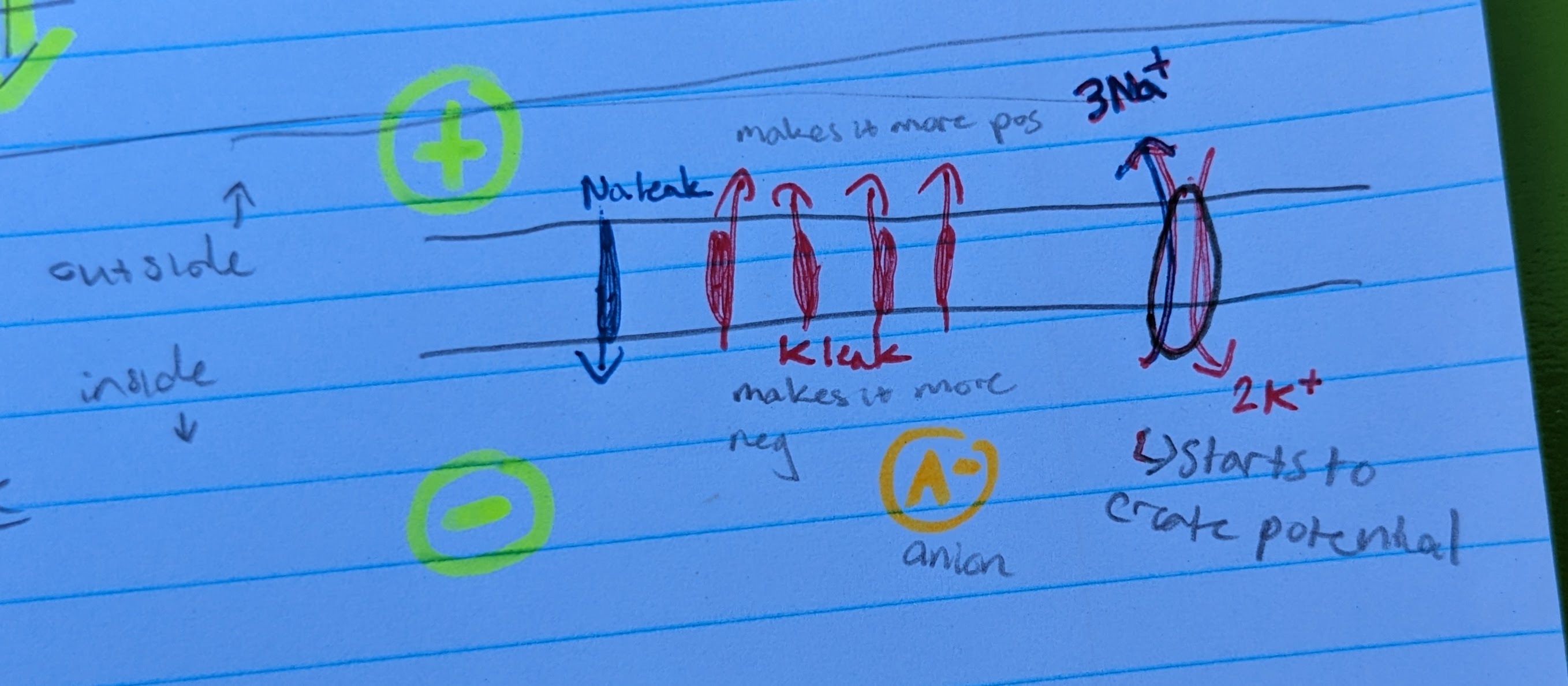
combining electrical and chemical gradients (image)
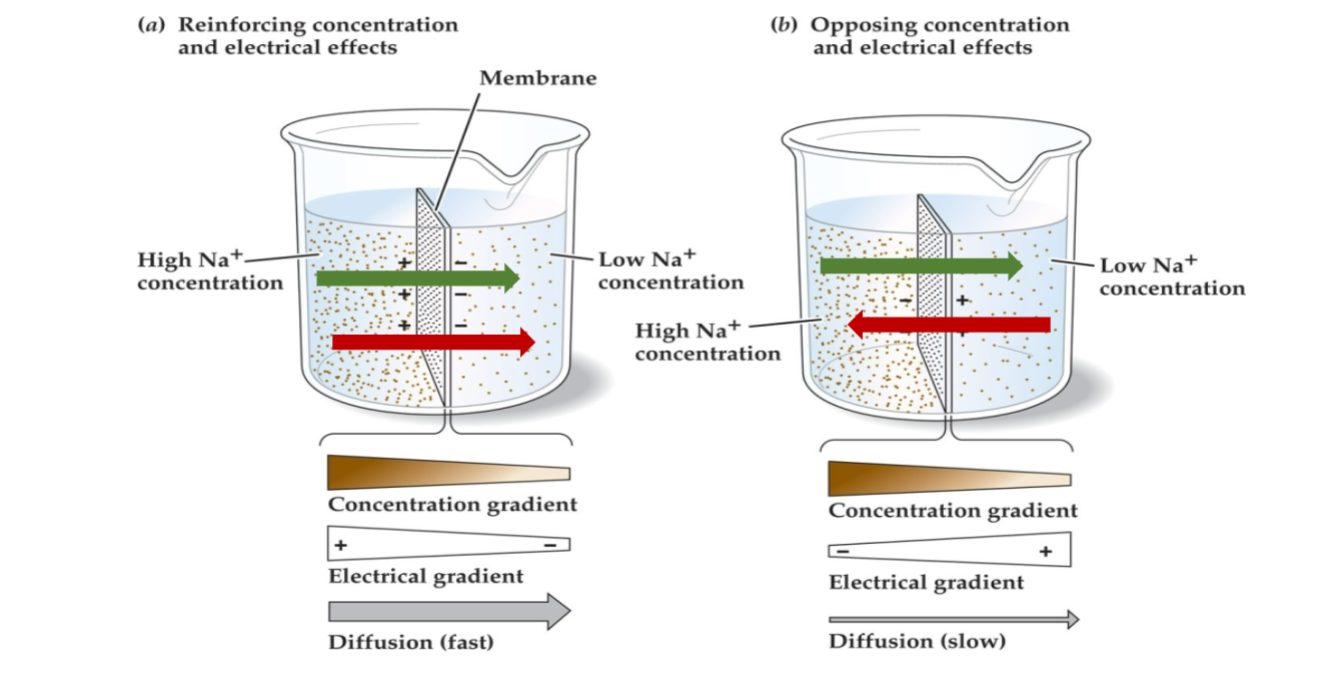
Equilibrium potential
-when net flux of ions = 0 (no net mvmt)
-when chemical gradient balances electrical gradient
Nernst equation
z = 1 for potassium
z = -1 for sodium
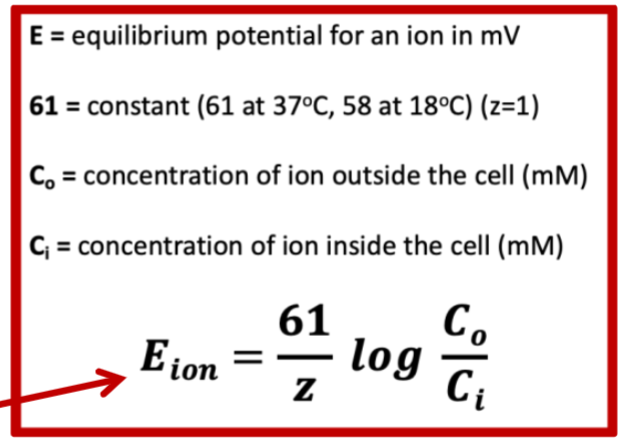
Board drawing - HYPOTHETICAL potassium equilibrium
final Ek+ = -90mV
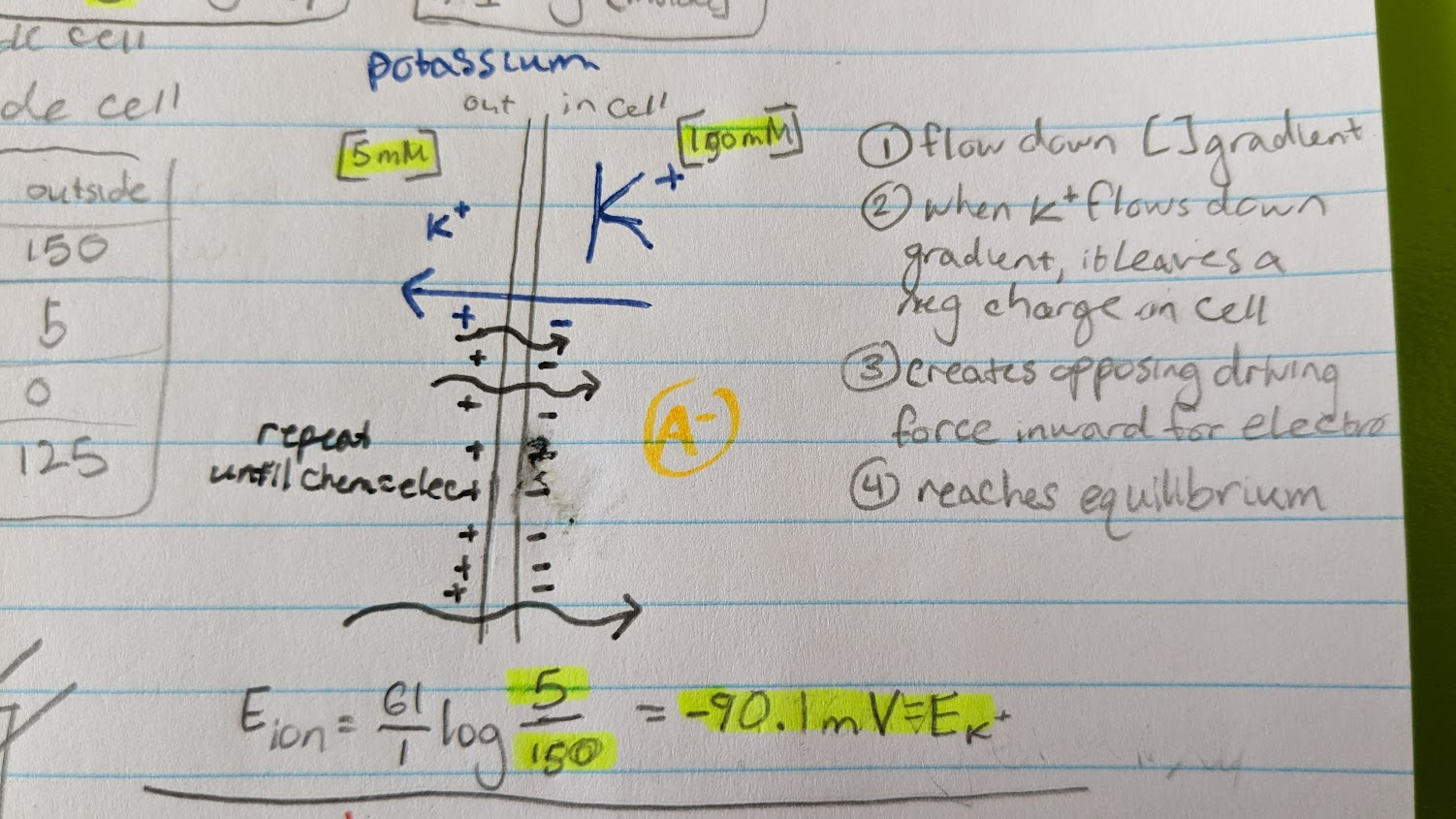
Board drawing - HYPOTHETICAL sodium equilibrium
final Ena+ = 60mV
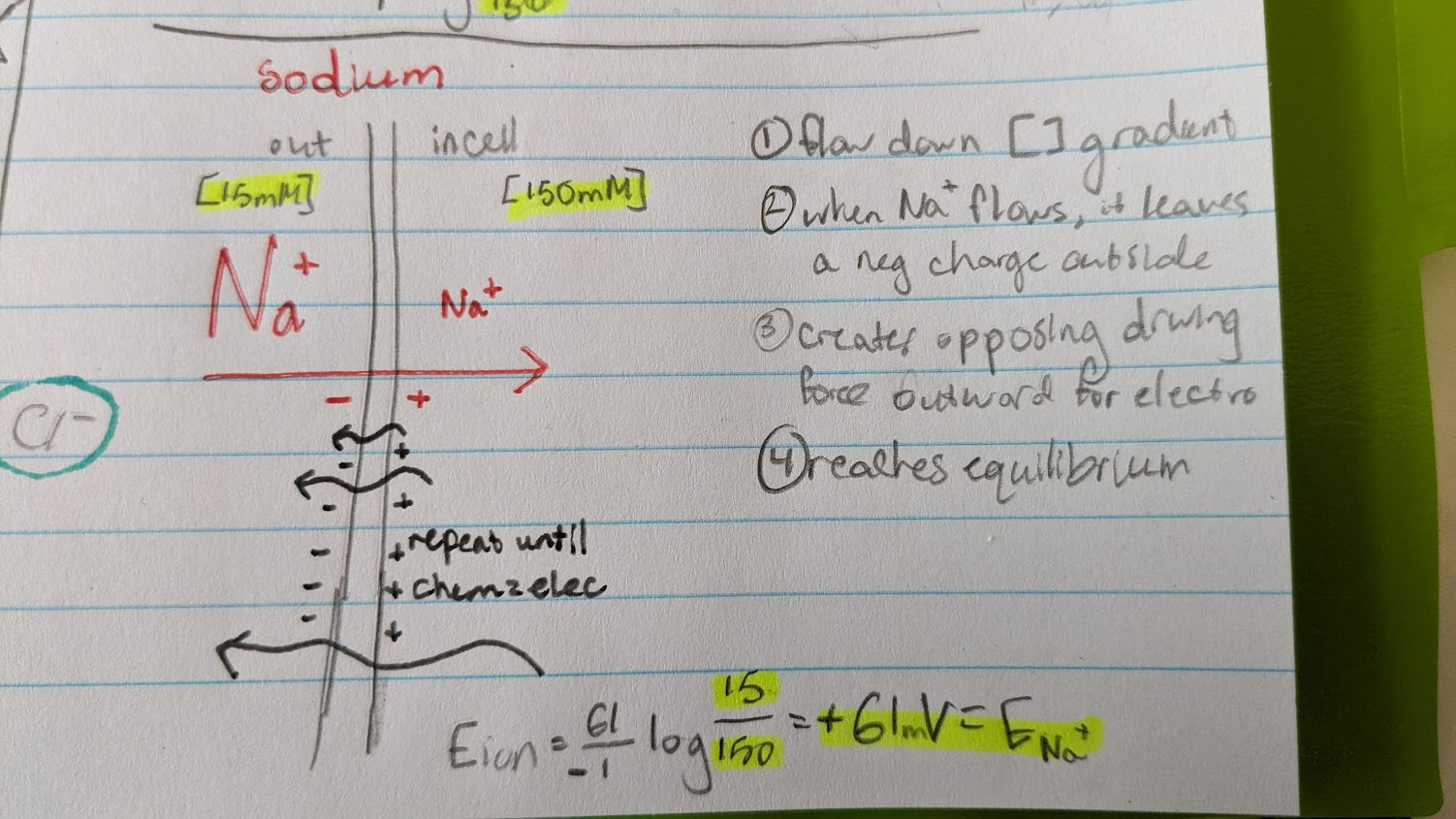
What is human RMP in mV?
70mV
board drawing - REALITY sodium/potassium equilibrium

Which ion (K+ or Na+) has an equilibrium closest to the RMP? Why?
K+
since there are way more K+ leak channels than Na+ channels, the flow of K+ out is much greater than the flow of Na+ in.
The final RMP will be = -70mV.
→ Na+ does not influence the charge that much because it can’t move across cell as freely
(remember hypothetical # is -90mV = K+, and 60mV for Na+)
Neuron segments graded and action potential diagram
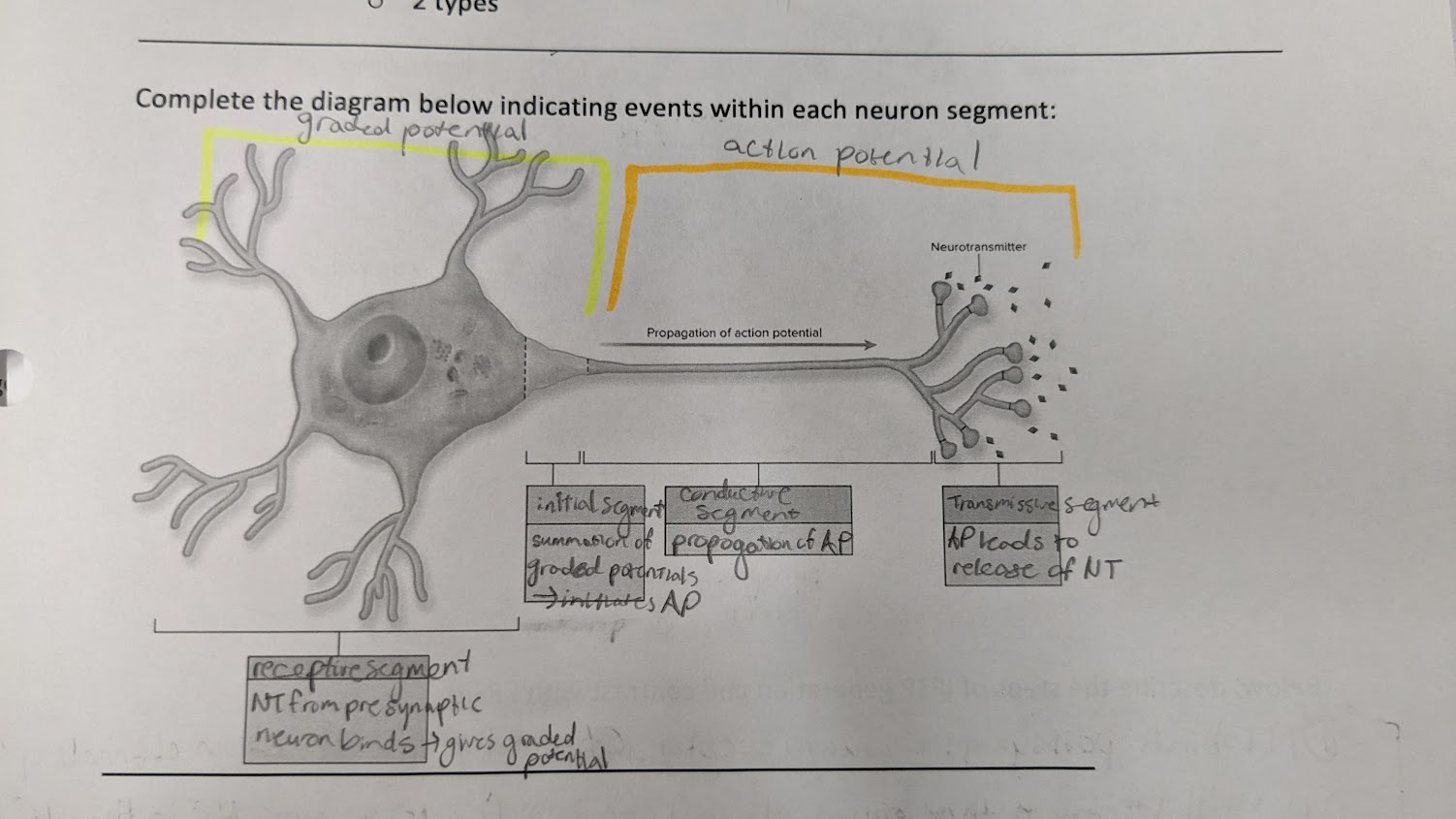
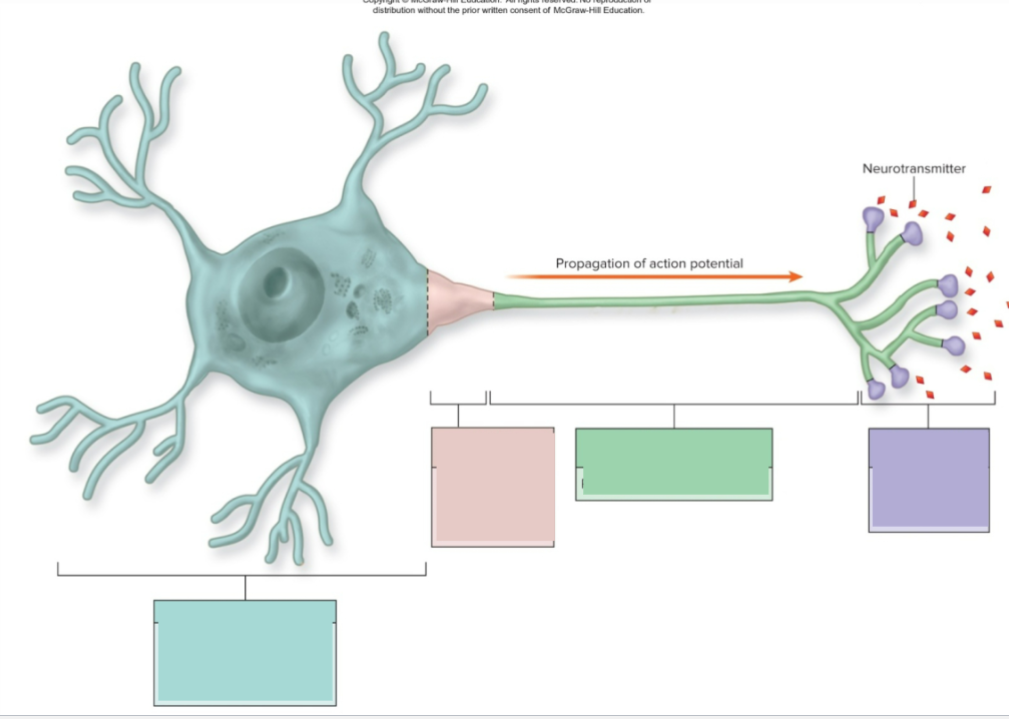
blue part
receptive segment (dendrites and cell body)
-NT from presynaptic neuron binds to postsynaptic
-gives graded potential
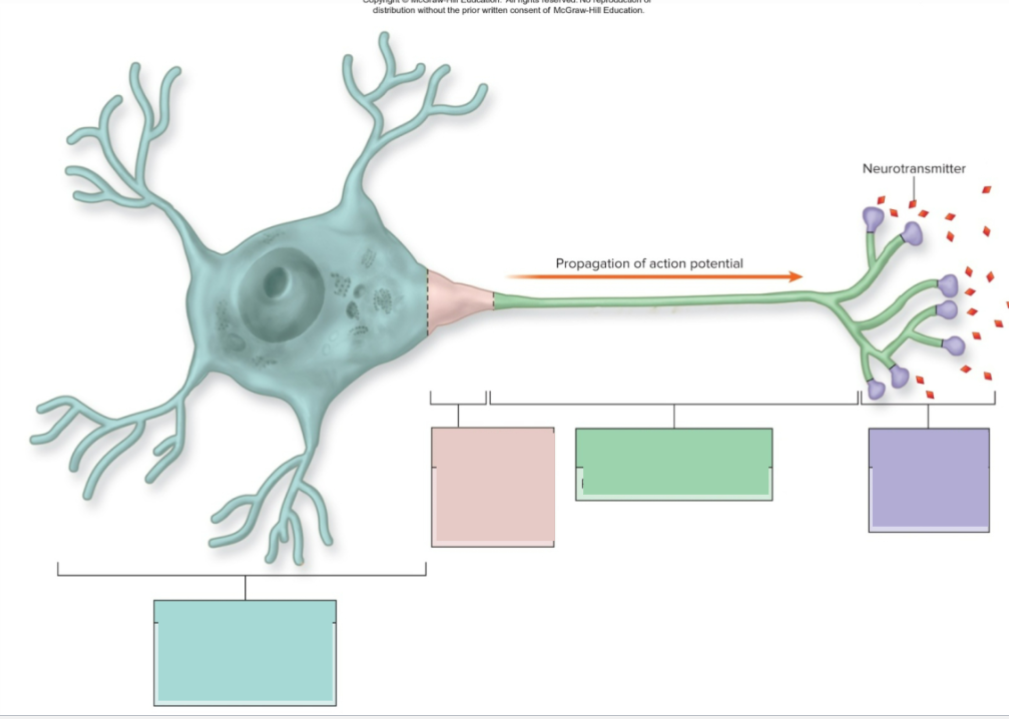
pink part
initial segment (axon hillock)
-summation of graded potentials happens here
-if threshold met, initiates AP
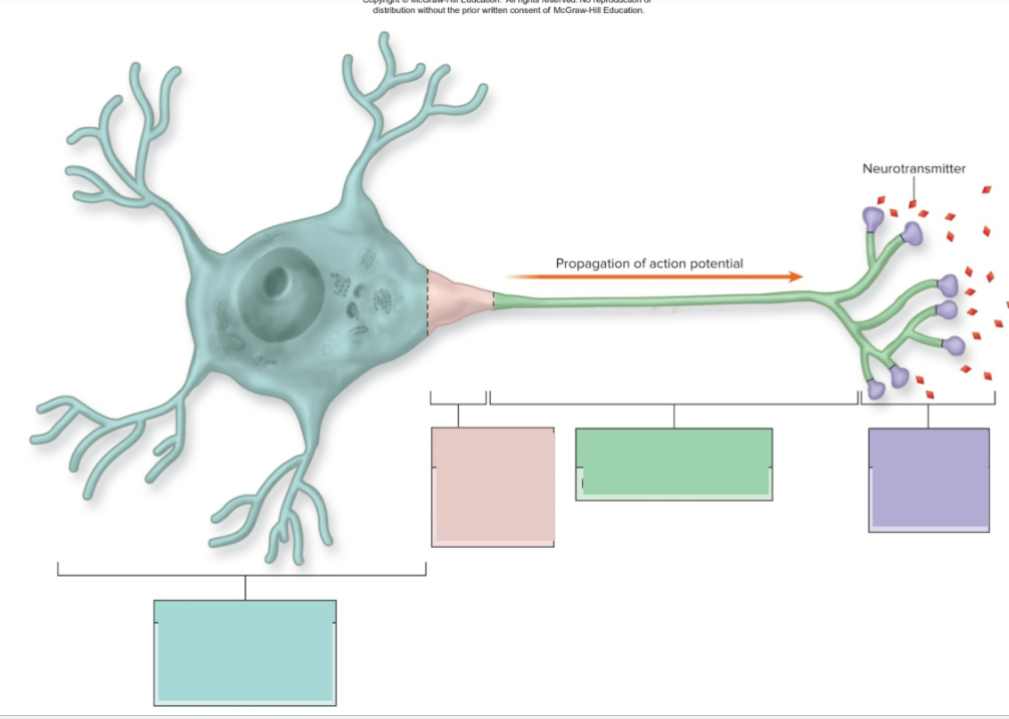
green part
conductive segment (axon)
-propagation of AP
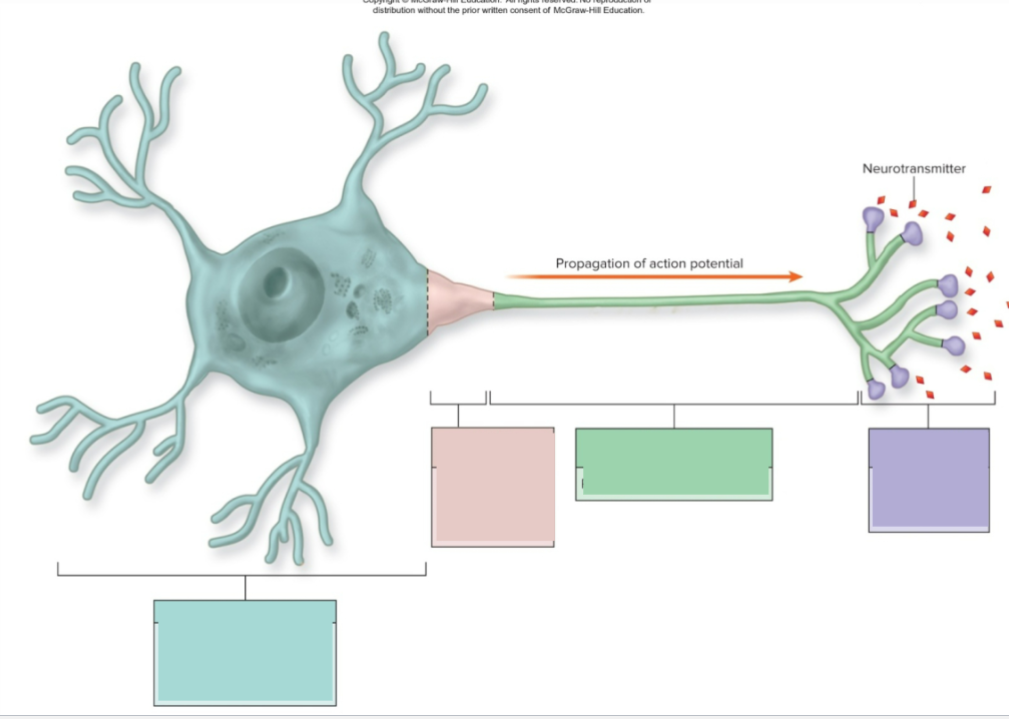
purple part
transmissive segment (axon terminals)
-AP leads to release of NT to the next axon
compare graded potential with action potential
graded (GP) = very short RMP changes. local current. happens from ion flow → chemically gated channels
action (AP) = long distance signal
3 types of GP chemically gated channels
-gated cation channel (for Na+ or K+)
-gated K+ channel (K flow out)
-gated Cl- channel (Cl- flow in)
**in receptive segment of cell (dendrites)
Why is the local current of a GP signal short lived?
-current is from flow of ions
-ions experience resistance from cell cytosol → eventually dies out over distance
depolarization vs hyperpolarization
DEpolarization = move TOWARD 0, toward AP threshold → EPSP
HYPERpolarization = move AWAY FROM 0, away from AP threshold → IPSP
→ AP will not occur if it’s hyperpolarized
EPSP vs IPSP. What ions cause EPSP and what cause IPSP?
EPSP = excitatory signal. Ions moving will depolarize the membrane (Na+ into cell)
IPSP = inhibitory signal. Ions moving will hyperpolarize the membrane (K+ out and Cl- in)
steps of EPSP generation, highlight the parts that are different from IPSP generation
1) NT binds postsynaptic receptor. chemically gated cation channels open
2) Na+ and K+ move thru cation channels → Na+ floods in, more Na+ in than K+ out
3) Cell membrane depolarized = EPSP
4) EPSP moves thru membrane. Local current weakens as it moves (bc of cytosol resistance)
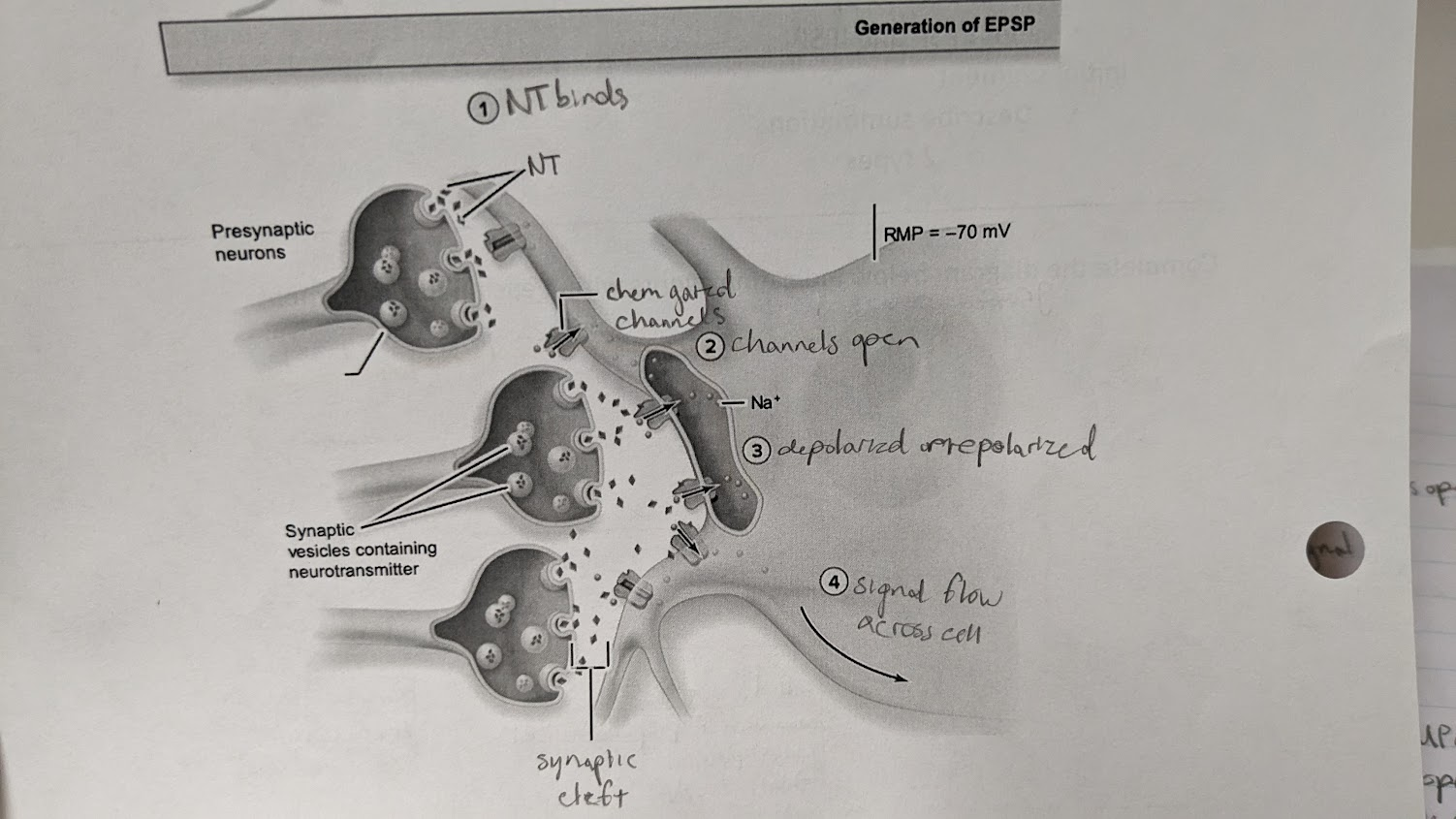
steps of IPSP generation, highlight the parts that are different from EPSP generation
1) NT binds postsynaptic receptor. chemically gated Cl- or K+ channels open
2) K+ out or Cl- in. Both make neuron more negative
3) Cell membrane hyperpolarized = IPSP
4) IPSP moves thru membrane. Local current weakens as it moves (bc of cytosol resistance)
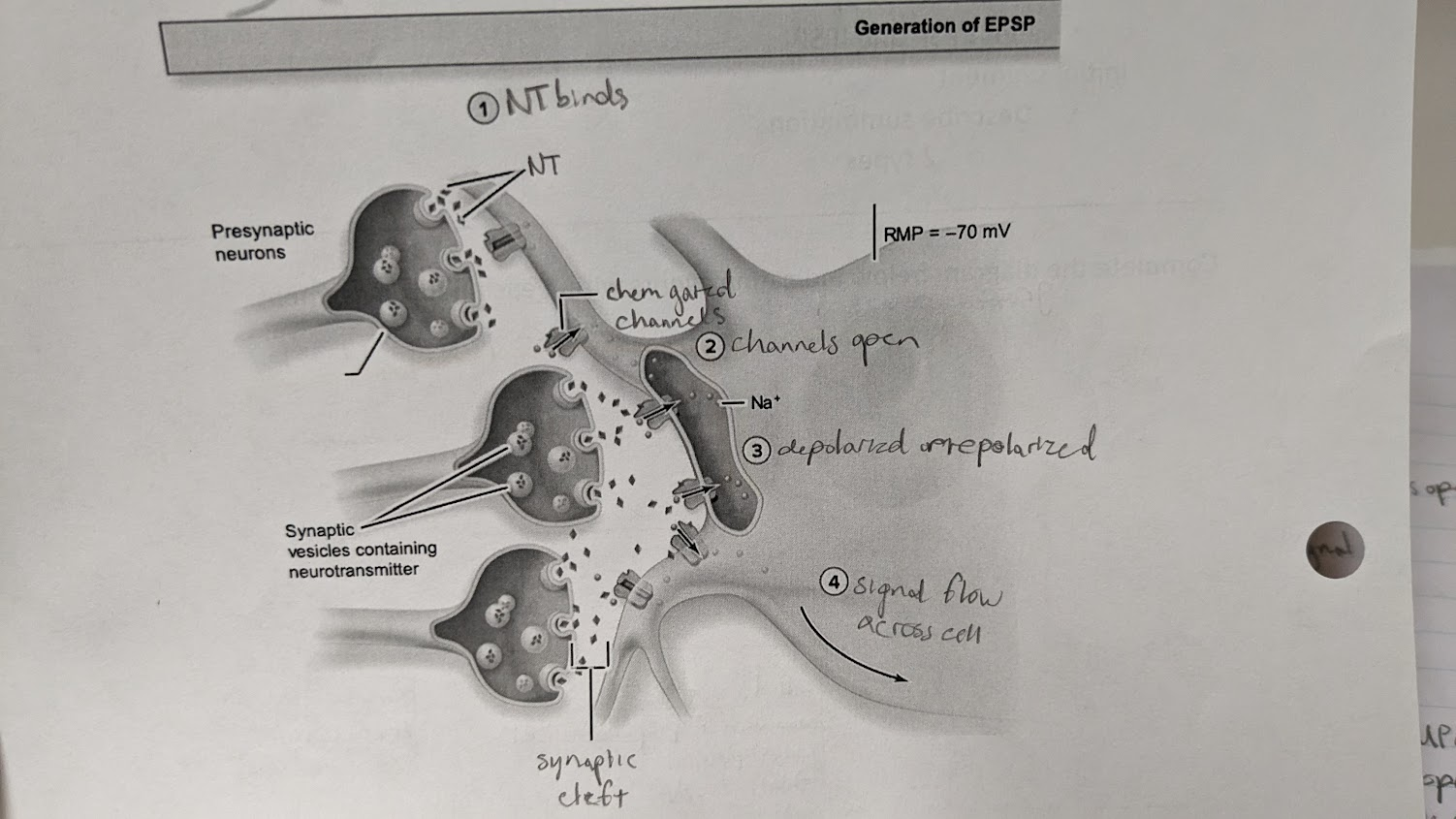
spatial summation
multiple locations on postsyn cell receive NT simultaneously, and generate postsyn potentials
→ they combine to reach threshold
-if reach threshold will activate AP
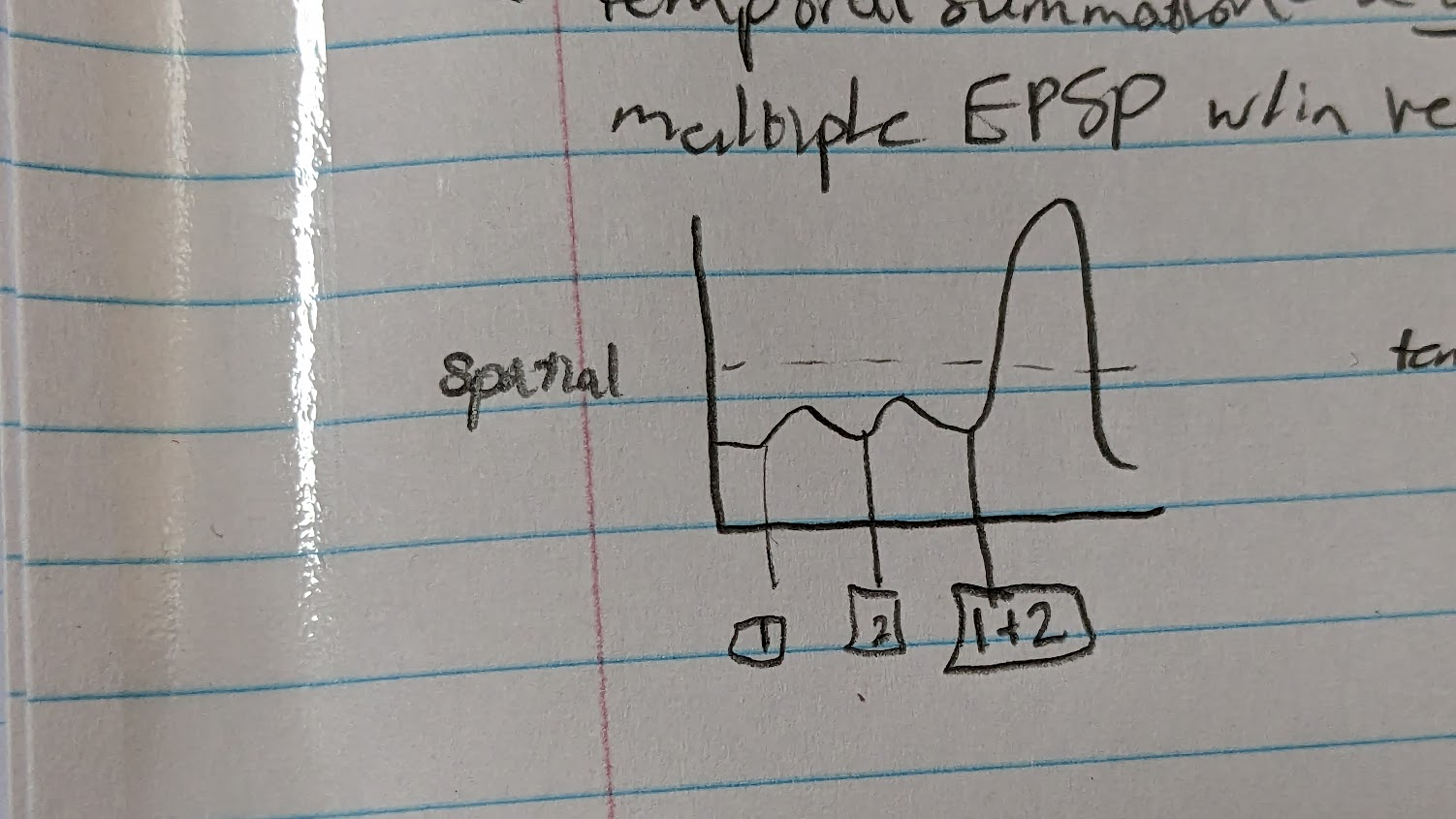
temporal summation
single presynaptic neuron fires repeatedly and makes multiple EPSP in a very short time period
→ they combine to reach threshold
-if reach threshold will activate AP
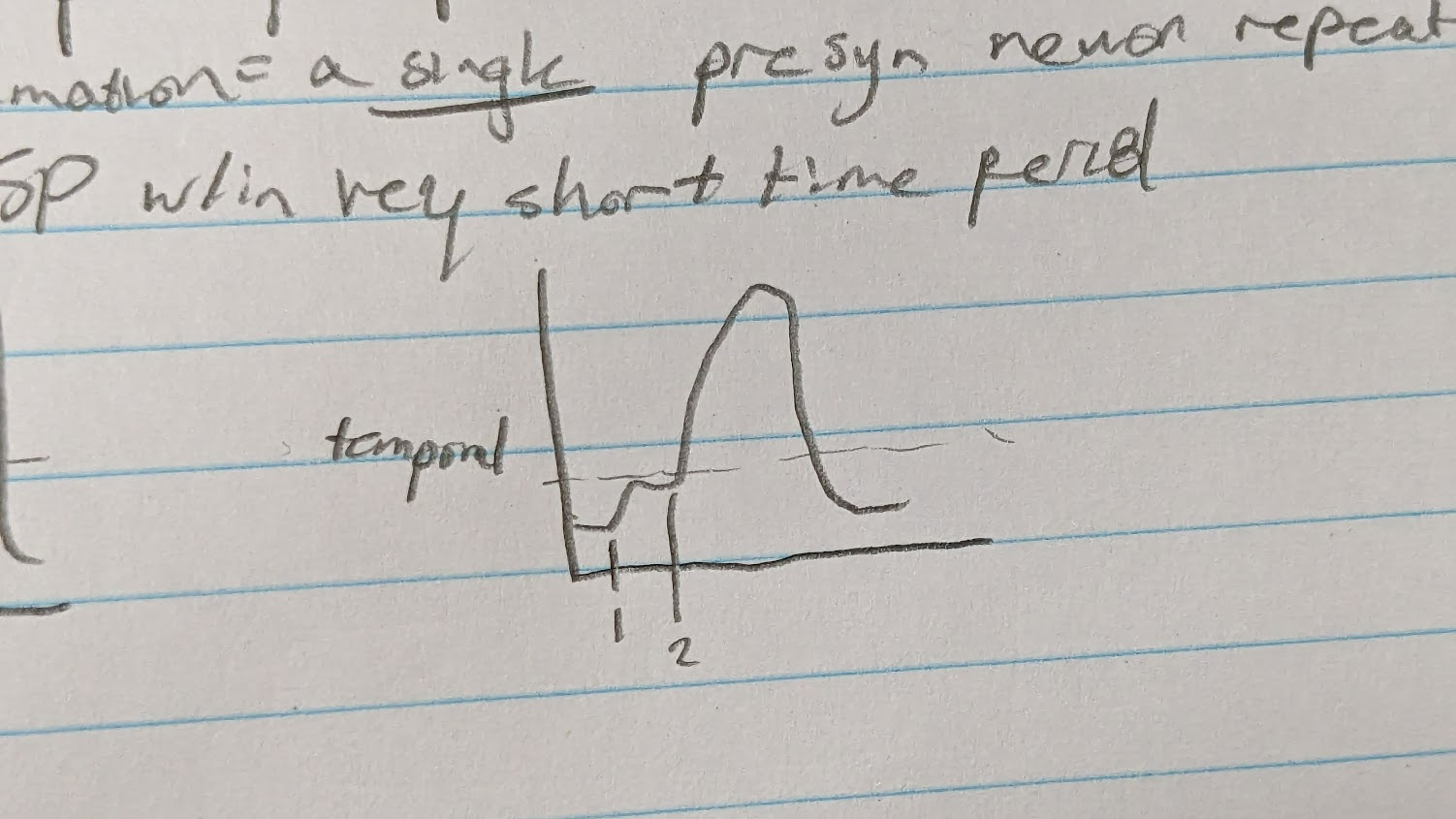
absolute threshold
the value graded potential summation must reach for neuron to generate an action potential.
-if reached, voltage-gated channels will open and AP generated
-55mV
summation
multiple EPSP and IPSP combining for one effect
-must occur in order to generate an AP because 1 EPSP or IPSP is not enough to reach threshold
compare subthreshold, threshold, and suprathreshold stimulus of AP
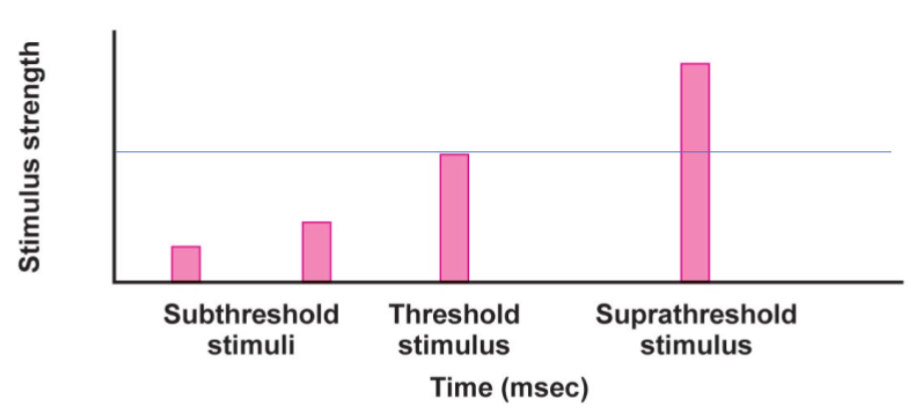
all-or-none response
response will happen the same once threshold is reached
→ strength of stimulus DOES NOT affect response after stimulus hits threshold
voltage gated channels (VG channels)
open in response to a change in voltage (after graded potential sends EPSP or IPSP)
Na+ channels = Na+ goes in
K+ channels = K+ goes out
depolarization vs repolarization of AP
DEpolarization = cell become positive. Na+ VG open, Na+ into cell
REpolarization = cell become negative. K+ VG open, K+ out of cell
axolemma
membrane of axon
VG sodium channel,
1) closed but capable of opening
-AG is closed
-IG is open
→ during resting potential
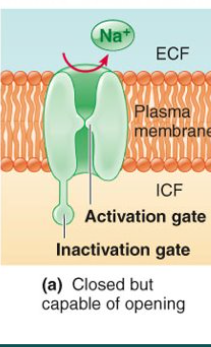
VG sodium channel,
2) open, activated
-AG and IG are open
-AG opening is triggered by reaching threshold
→ during rising phase of AP
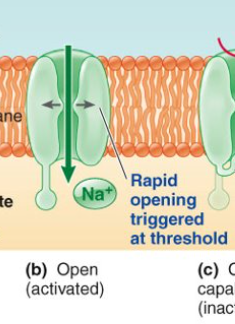
VG sodium channel,
3) closed, incapable of opening
-AG remains open
-IG closed
-IG closing slowly, triggered by reaching threshold
→ closes completely during falling phase of AP
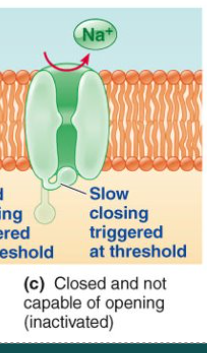
VG potassium channel
-AG has a delayed opening that is triggered when threshold is reached
→ becomes fully open during falling phase of AP
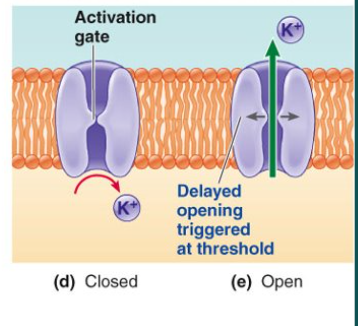
Step 1 of AP
Resting Vm
-K+ leak channel open. VGC closed.
-cell = -70mV
-Pk > Pna of cell
→ if sufficient pos charge (EPSP), Vm hits threshold and triggers AP

Step 2 of AP
Rising Phase
-Na+ VGC opens, K+ VGC stays closed
-Na rush into cell and depolarizes it
-Pna » Pk
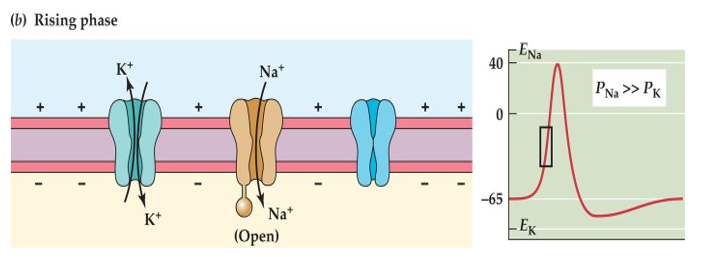
Step 3 of AP
Falling Phase
-Na+ VGC closes and can’t reopen. K+ VGC opens
-K+ rush out of cell (electro pull is stronger than concentration pull, cell wants to be negative)
-Pk » Pna
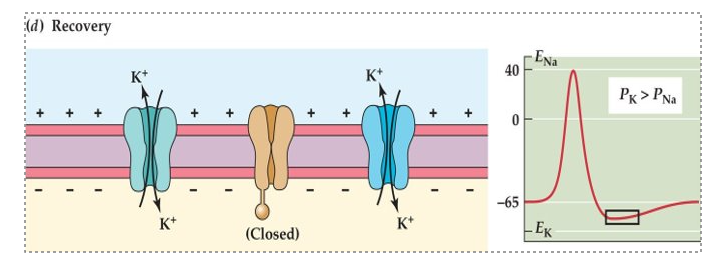
Step 4 of AP
Undershoot/Hyperpolarization
-K+ out makes cell hyperpolarized
-K+ VGC slowly closes
-Na+ VGC closed, but capable of opening again
Hodgkin cycle
Positive feedback loop
-depolarization leads to VGC opening, leads to Na+ rushing in
-climactic event = release of neurotransmitter
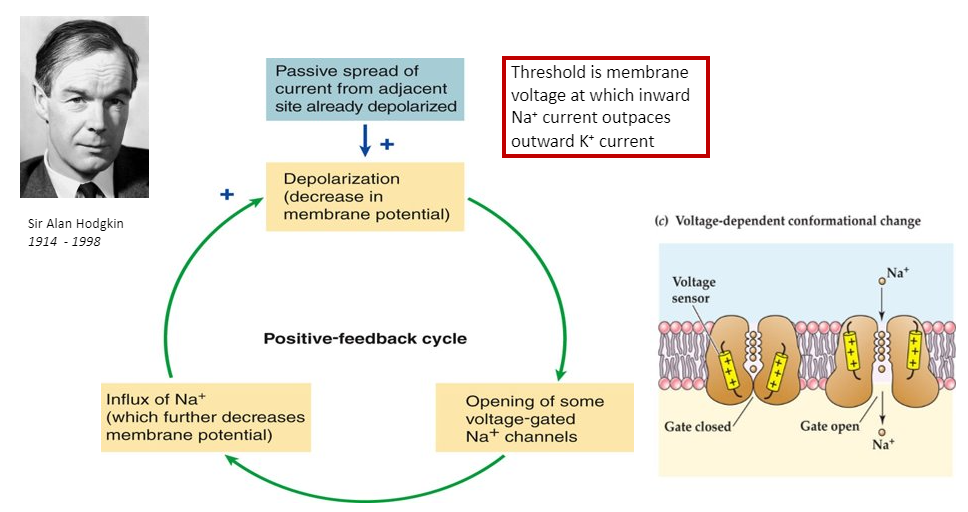
Absolute refractory period
-when Na VGC activation gates open, then after the inactivation gates close
—> there is no way to send a second AP since inactivation gate is closed and incapable of opening
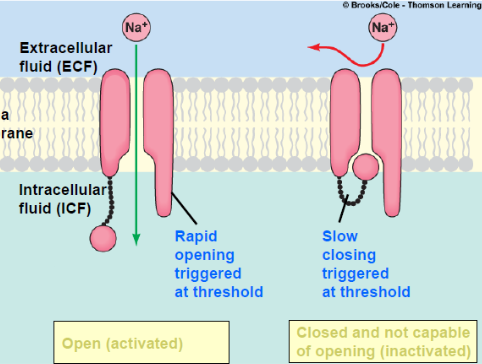
Relative refractory period
-when Na VGC inactivation gates start opening, and activation gates remain closed
-meanwhile the K+ VGC are slow to close, cell becomes hyperpolarized.
—> 2nd AP possible, but needs larger EPSP to reach threshold since it’s hyperpolarized
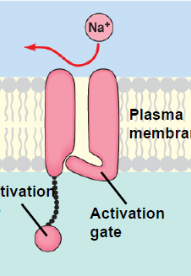
Comparing absolute and relative refractory period (image)
absolute = red
relative = blue
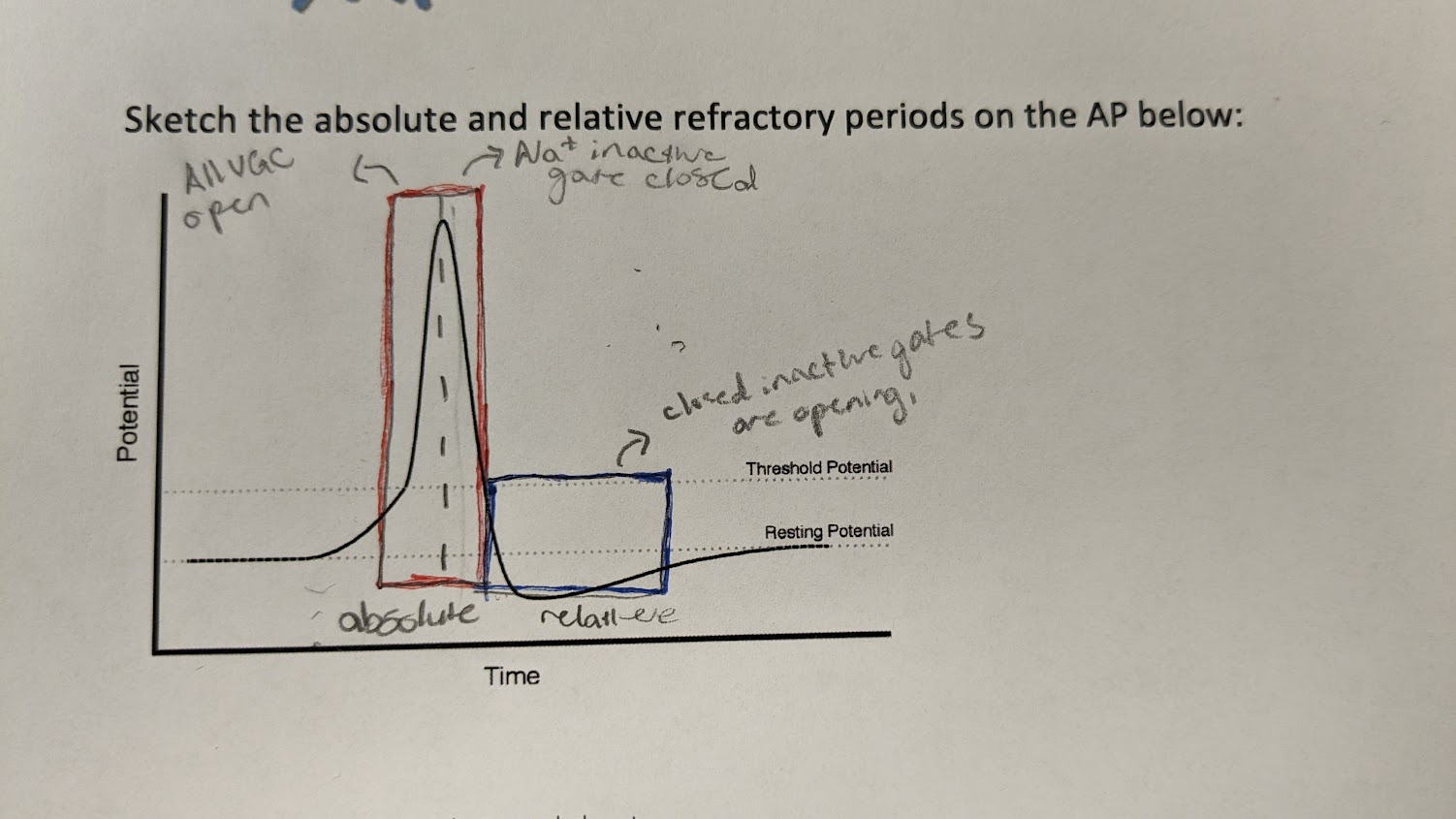
How to increase speed/efficiency of AP signal?
1) myelinate axon
2) increase axon diameter
How does myelin affect AP speed?
AP increases with more myelin
(membrane resistance = Rm. increases)
↑ myelin ↑ Rm ↑ velocity
How does axon diameter affect AP speed?
AP increases with bigger diameter
(axoplasmic resistance = Ri. decreases)
↑ diameter ↓ Ri ↑ velocity
continuous conduction
conducts signal thru axon, uninterrupted
-very slow
-unmyelinated axons
saltatory conduction
AP signal jumps btwn myelin
-very fast
-all the channels located in the nodes of Ranvier
-myelinated axons
calcium pump/neurotransmitter release
**Ca is required for neurotransmitters to release into the synapse
